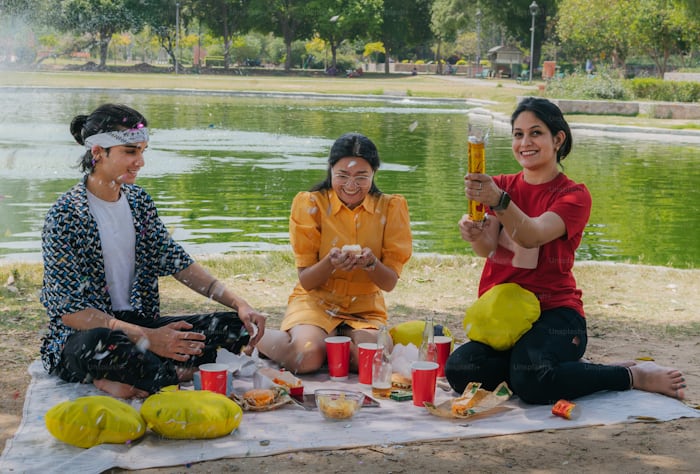In recent years, the term “kotted” has become a growing trend, particularly in lifestyle and real estate sectors. It represents more than just a new housing model—it’s a movement toward rural, self-sufficient living with modern comforts. But what exactly is “kotted”? Why has it captured the imaginations of so many people across the globe? This article delves deep into the concept, its origins, and its increasing appeal to people seeking alternative lifestyles outside of the bustling urban centers.
The Origins of the “Kotted” Concept
The word “kotted” is derived from “cottage,” but with a contemporary twist. Historically, a cottage referred to a small, cozy dwelling, often found in rural or semi-rural locations. It was synonymous with simplicity and minimalism, typically offering basic shelter to those living close to nature. Over time, cottages became romanticized as ideal vacation homes—places to escape the hustle and bustle of city life.
However, the modern “kotted” goes beyond just the traditional rustic cottage. It merges the simplicity and charm of rural living with state-of-the-art technology and design. Think of it as a 21st-century cottage: eco-friendly, tech-enhanced, and often part of a broader movement toward sustainable living. The homes themselves vary in size, but they’re typically designed with efficiency in mind, using materials and construction techniques that minimize their environmental impact.
Key Features of Kotted Homes
- Sustainability and Eco-Friendliness: One of the central tenets of the “kotted” lifestyle is a commitment to sustainability. These homes often employ solar panels, energy-efficient appliances, and insulation systems designed to reduce energy consumption. Recycled materials and locally sourced products are often incorporated into the building process. For those deeply committed to reducing their carbon footprint, “kotted” homes can even include rainwater harvesting systems and composting toilets.
- Smart Living: Despite their rural charm, “kotted” homes embrace technology in a way that ensures comfort and convenience. Smart thermostats, automated lighting, and security systems controlled via smartphones or tablets are common features. This blend of old-world charm with cutting-edge technology is one of the key elements that sets “kotted” homes apart from traditional rural cottages.
- Off-the-Grid Potential: Many “kotted” enthusiasts are drawn to the concept because of the potential for off-the-grid living. These homes are designed to be self-sufficient, with solar or wind power providing energy, and eco-friendly water management systems in place. This independence from public utilities is appealing to those who want to reduce their dependence on conventional infrastructure.
- Minimalism in Design: Another defining characteristic of “kotted” homes is their minimalist design. The interiors are often open-plan, maximizing space and natural light. Furniture is kept to a minimum, and storage solutions are built into the design, reducing clutter and encouraging a more simplistic way of life. This minimalism is not only about aesthetics but also reflects the ethos of living with less and focusing on what’s truly important.
- Connection with Nature: “Kotted” homes are often located in areas that allow for a close connection with nature. Large windows, outdoor spaces like decks or patios, and even edible gardens are common features. The emphasis is on living in harmony with the natural world, whether that means growing your own food or simply enjoying the beauty of your surroundings.
The Appeal of the Kotted Lifestyle
So, why has the “kotted” lifestyle gained such popularity, especially in recent years? There are several factors contributing to its rise:
- Desire for Simplicity: As more people become overwhelmed by the fast pace of urban life, there is a growing desire for simplicity and a slower pace of living. “Kotted” homes offer the perfect escape—providing an opportunity to live a more deliberate, peaceful life away from the distractions and stresses of the city.
- Environmental Concerns: With climate change at the forefront of global conversations, more individuals are looking for ways to reduce their environmental impact. The “kotted” lifestyle, with its emphasis on sustainability, is an attractive option for those who want to live in a way that’s kinder to the planet.
- Remote Work Revolution: The COVID-19 pandemic has permanently altered how we work. With more people able to work remotely, there’s been a significant shift in where people choose to live. Rural and semi-rural areas, once seen as impractical for those who needed to commute to work daily, are now viable options. “Kotted” homes offer an idyllic setting for remote workers who want to combine professional productivity with personal tranquility.
- Financial Accessibility: In many parts of the world, property prices in urban areas have skyrocketed, making homeownership increasingly unattainable for the average person. “Kotted” homes, particularly those in rural areas, can offer a more affordable alternative. Additionally, the minimalist design and sustainable energy sources mean that the long-term cost of living in a “kotted” home can be significantly lower than in a traditional urban dwelling.
- Health and Well-being: There’s a growing body of research that highlights the health benefits of living close to nature. People who spend more time outdoors tend to experience lower levels of stress, improved mental health, and increased physical activity. The “kotted” lifestyle, with its emphasis on nature and simplicity, is particularly well-suited to fostering a healthy, balanced life.
Challenges and Considerations

While the “kotted” lifestyle has many advantages, it’s not without its challenges. For one, living in a rural or off-grid setting requires a certain level of self-sufficiency and problem-solving skills. Power outages, access to healthcare, and limited social opportunities can be drawbacks for some. Additionally, while “kotted” homes are often more affordable in the long run, the upfront costs of building a sustainable, tech-enhanced house can be higher than those of a conventional home.
Conclusion
The “kotted” phenomenon is more than just a housing trend—it’s a lifestyle choice that reflects broader shifts in how people want to live. As the world becomes more fast-paced and urbanized, the desire for simplicity, sustainability, and a closer connection to nature continues to grow. For those looking to escape the pressures of modern life, embrace eco-friendly living, and find solace in nature, the “kotted” lifestyle offers a promising alternative. Whether it’s a temporary retreat or a permanent home, “kotted” living represents a new frontier in rural, minimalist, and self-sufficient living.





